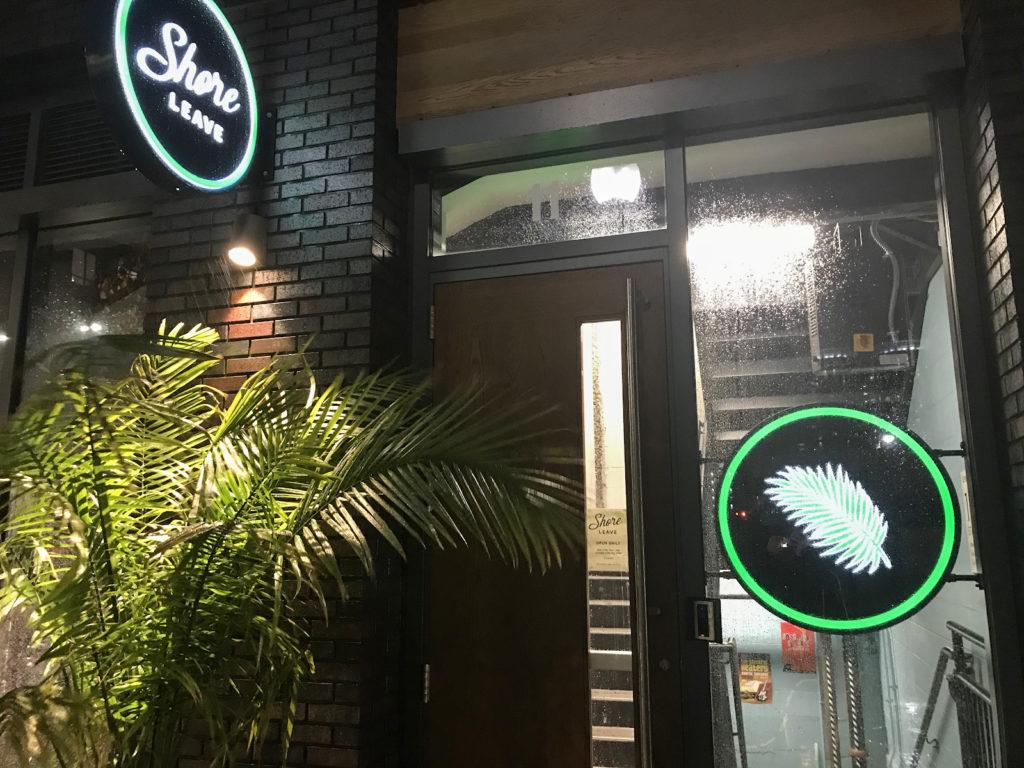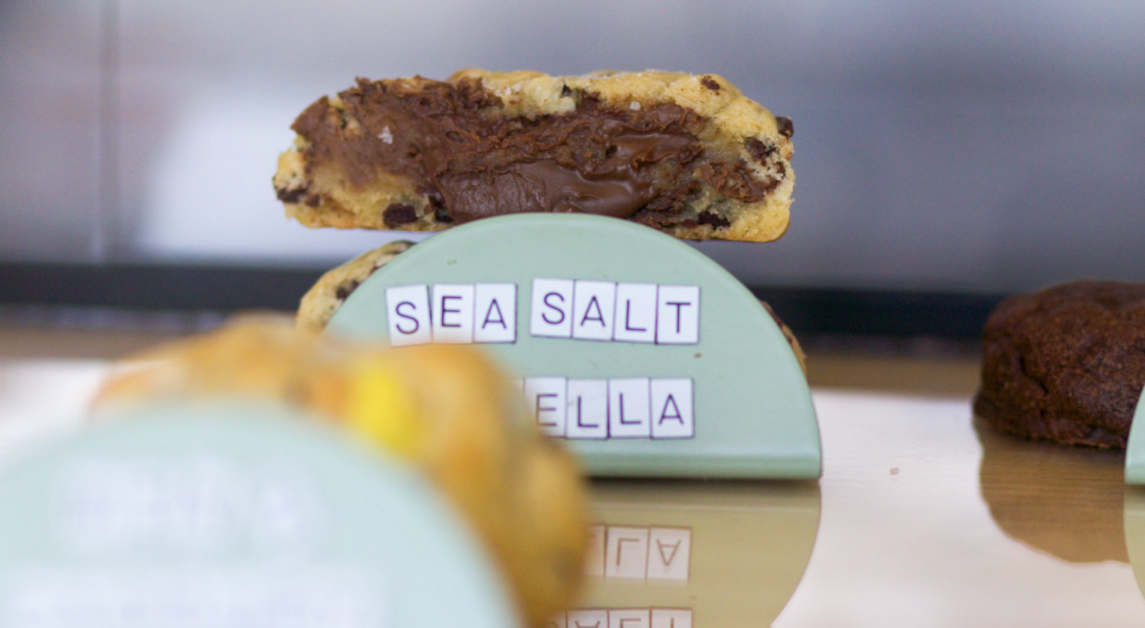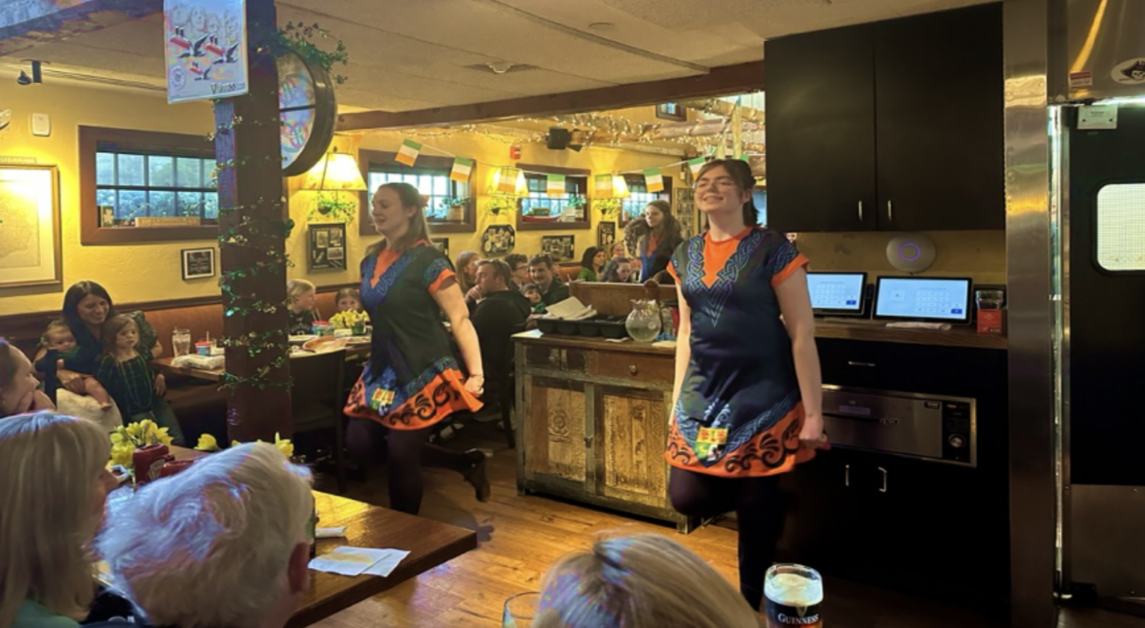“Shore Leave” refers to the time sailors get to go on land and relax after working on their ships. The tiki-themed restaurant with the same name in Boston’s South End attempts to emulate this aura of leisure. Co-owners Colin Lynch and Ryan Lotz developed the concept because this type of restaurant does not exist in Boston. It was created as the answer to those cold gray winter nights: “Tropical escapism, even in a basement,” general manager Matthew Gisler said.
Shore Leave is right off the main set of shops on William E. Mullins Way with palm fronds by the door guiding you into paradise. The restaurant is actually in the basement of the building, though—knowing where to go can be somewhat confusing if it’s your first time there. Along the stairs, the walls are painted with blue murals depicting the sea, driving home the nautical theme that takes root in the seafood-centric dishes.
The warm, dim lighting from the restaurant is an immediate contrast from the brighter stairwell. The dim lighting achieves the effect of making a customer feel as if they have been transported elsewhere, but even for college students the menu was difficult to read by candlelight.
As for the food and drinks themselves, the food menu was southeast Asian and seafood inspired and the drink menu oozed with rum. The Snack part of the menu consisted mainly of salads—one of their most popular is the green papaya. The crispy rice salad was delicious, citrusy, and fresh compared to the heavier, fried options throughout the rest of the menu.
The style is a contemporary twist on tiki, with bamboo light fixtures above the plush green booths that evoke a hut found on the beach. The wicker chairs at the tables and teal skulls further accentuate the mix between upscale and traditionally tiki. At the tables themselves, the silverware sits in cans to keep with the theme of more relaxed, bar-style seating. The ambience of Shore Leave is relaxed and eclectic—Brother Cleve, a musician on staff, mixes the sounds of traditional beach bar music with more pop-centric beats.
For a taste of their various specialties, the best option on the menu was the Pupu Platter, which comes with scallion pancakes, coconut pancakes, chicken satay, crab rangoon, and spring rolls. Each component of the dish was excellent, but the rangoons were especially good, fried excellently with rich cheese in the middle. They were paired with pineapple, peanut, and sweet chile sauces, all adding either the necessary sweetness or spiciness to the foods.
My favorite food of those on the platter was the scallion pancakes, which was a sort of fried dough that paired well with each of the sauces because of the easy because of the easy salty-sweet contrast. The platter was a perfect amount of food for two people, with two or three pieces of each food surrounding a fire inspired by the tiki torches. The duck—one of the more expensive items on the menu—is one of the most popular and stunning dishes, Gisler said, though it’s difficult to keep in stock because the kitchen prepares it three days beforehand.
These restaurant-goers dress more formal than a traditional bar wear, yet aren’t overdressed. Men typically wear dress shirts with khakis, and women wear anything from dresses to jumpsuits, but no shoes would probably be frowned upon. Customers come from all walks of life, according to Gisler—graduate students, Southies, cocktail nerds, or couples out for a night all flock like parrots to Shore Leave.
The drink menu, in a folder shaped like a coconut that only adds to the tiki ambience, is extensive. A drink that truly wows with its presentation, the Road to Guavalajara comes in a ceramic volcano with a fire lit in the center. Tiki mugs can be seen displayed around the bar, including anything from a skeleton face to more traditional mugs, and are for sale to collectors who come in for a bite. These tropical flavors are maintained by a team that selects the fruits that are in season and often purees them for the restaurant’s drinks.
However, these tropical cocktails are not complete until the most important component is added: the alcohol. The restaurant pulls from both local and Jamaican rum distributors. The best selling drink is the Shore Leaf, an homage to all things Boston. A combination of molasses, Madero, passionfruit, and an assortment of rums, it refers to Boston’s past as a molasses port. The pricing is mid-range for the food (except for the duck) with many of the dishes priced around $9 and drinks upwards of $8. The house specialties are priced around $13 and up.
If a beach vacation is too far and too expensive, maybe wander down to the South End to sip on a little bit of paradise. Gisler illustrated the relaxed ambiance of Shore Leave best: “Come hang out, it’s a fun time.”
Featured Image Courtesy of Rebecca Speer / for The Heights













